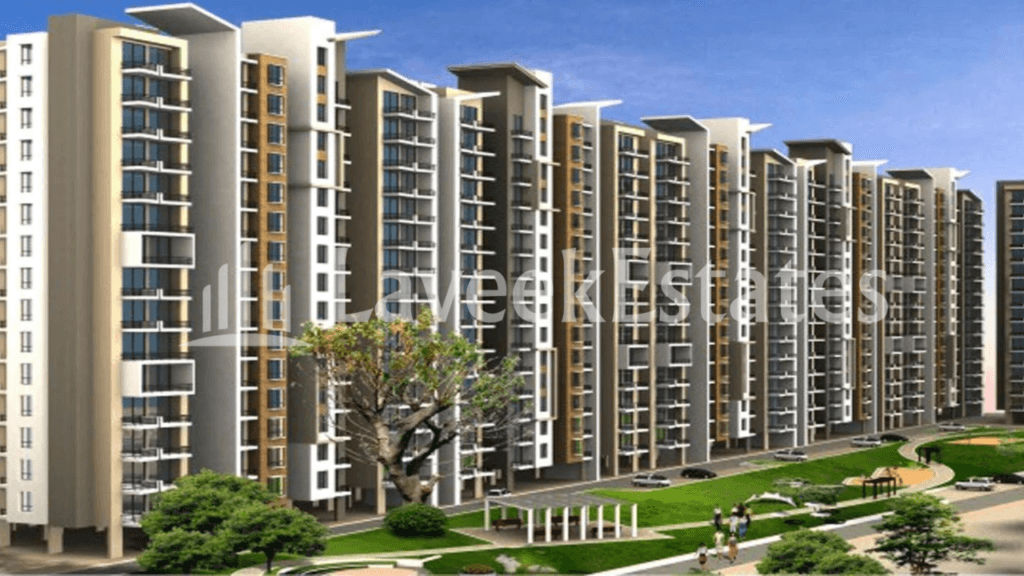Considering Gurgaon situated in one of the most populated states of India, Haryana, there is a raising demand for affordable housing there. Being one of the satellite city’s of the NCR region, Gurgaon has become one of the preferred locations for residential as well as commercial investments. Nonetheless, the increase in population density of the city has compounded the problem of affordable houses for middle and lower-income earners dueto the skills demonstrated in the supply and demand of the houses.
Importance of affordable homes:
Affordable housing is crucial for several reasons:
Social Equity:
Affordable homes provide access to stable, secure, and decent housing for lower-income individuals and families.
This helps promote social inclusion and reduces housing-related disparities.
Economic Stability:
Quality and cheap housing provides flexibility in the general spending since a large part of money will be directed to other basic needs such as meals, doctor fees, and school fees.
Also Read:- Top 10 Smart Cities in India for Real Estate Investment
This, in turn, increases productivity in those areas and relieved the pressure exerted on social services.
Community Development:
The target of affordable housing is a large number of people and may give an extra impulse to the district. Utilizing the procurement methods can act as a way of fostering the growth of local businesses as well as the general health of a society.
Environmental Sustainability:
Affordable housing schemes also contain the use of energy saving apparels and harnessing of renewable energy in the construction of these facilities. This contributes to saving the environment through the conservation of energy in the mconstruction of houses and affordable charges for the inhabitants.
Health and Well-being: Housing that is safe and affordable has been greatly associated with better health of an individual at the physical as well as the mental well being. It can give the stability and alleviate the pressures of housing instability or homelessness.
Workforce Development:
Housing that is accessible, at reasonable rents to the working part of the population, will assist in drawing people to work, and keeping competent employees in stable jobs, making for economic development.
It means workers in low and middle income earnings are able to afford dwelling units near to their places of work.
To manage the need for the affordable homes is one of the aspired goals that needs solution searching in the forms of governmental frameworks, joint ventures of private industries and companies, as well as local community programs and projects. The provision of affordable shelter is therefore a key component of social justice, economic stability, and enhanced development in any society.
Thus, the goal of article is formulated as follows: in this article it is proposed to described the main factors that contributed to the increasing demand for affordable housing in Gurgaon and analyze why such market has become so attractive for many.
Booming Population and Urbanization
In the past few decades, population growth has tremendously been realized in Gurgaon due to the high demand for personnel in the city and its surrounding areas especially in technology, automobile, and construction industries. Gurgaon as per the 2011 census had a population of more than 876000 which was estimated to cross 1000000 in the year 2015. 5 million by 2023. This has resulted to the increase in population hence the housing deficit most particularly in the affordable income bracket.
Due to increasing population, many people are moving to Gurgaon in search of better job opportunities and the quality life and therefore the demand for affordable housing has emerged. Over the years, the price of real estate in Gurgaon has pushed the middle class as well as the lower income groups out to the outskirts due to inability to afford homes in Gurgaon hence the need to construct affordable housing units.
Improved Infrastructure and Connectivity
Gurgaon has today been revealed to be a modern city that is well connected for residents to consider it a prime area to live in. During this period the city has seen many infrastructural development activities such as, development of Delhi Metro, construction of Dwarka Expressway and enhancement of road network.
Such transport expansions have contributed to the creation of more accessible infrastructures in Gurgaon and shortening of distance accessibility for inhabitants hence making Gurgaon famous amongst workers in Delhi or other parts of NCR. Better accessibility has also enhanced the attractiveness of affordable housing projects in Gurgaon because their occupants can easily access employment opportunities as well as other basic facilities.
Government Policies involving affordable housing and Initiatives
The government of India has realized this need and has incorporated several polices and projects for construction of affordable dwelling units. These initiatives have worked hand in gloves for the development of affordable housing segment in Gurgaon in specific and India in large.
There are several such policies that have shown sides in increasing the affordable housing market in Gurgaon one of them is the Haryana Affordable Housing Policy which was initiated in year 2013. The policy’s primary objective targets the affordable housing stock for the economically weaker section (EWS) and lower income group (LIG) of the population. In this context, the Government of India introduced this policy that mandate the developers to set aside a reasonable proportion of any structures to be developed for affordable housing units, thus augmenting the quantity all through.
Also, to encourage individuals to go for affordable homes, the government has come up with some tax policies and financial incentives to the developers of the houses and the home buyers. Policies like the Credit Linked Subsidy Scheme (CLSS), under the Pradhan Mantri Awas Yojana (PMAY) have helped in making it easier for first time home buyer and affordable housing for the low income population in Gurgaon.
Flexibility in terms of the price and Return of Investment(ROI) is another standout factor.
This is one of the main aspects behind the increase of the affordable home investments in Gurgaon due to lower prices as compared to the luxurious housing segment. The cost of an affordable housing of home construction starts from INR 20 lakhs to 50 lakhs for an affordable housing in Gurgaon which is much lower cost compared to cost of luxury apartments or villas in the city.
These two aspects, moderation in the proximity’s price range and its unerring profit- potential, makes affordable house a good investment to undertake both by the lone investor and property tycoons and developers. In view of these, the value of these affordable homes in the city is likely to skyrocket in the same proportion as will the city’s growth and development, hence high returns on investments made.
Furthermore, yields on affordable homes in Gurgaon are gross and hence the rental yields obtained are also impressive for any form of investment particularly in the form of passive income. The current situation indicates that the rental housing has become a popular market attractive to young professionals and families hence the need for affordable rental units make the investment attractive.
Shift in Demographic Parameters and Life Style Choices
The proliferation of affordable housing in Gurgaon also has to do with demographic and lifestyle shifts within this point’s population. The newly entering generation into the housing market, the youngsters or the millennials, as they are often called, come with new preferences and new needs.
A majority of Gurgaon’s population base comprises the Millennials, among whom owning functional, cost-effective homes instead of elaborate houses is a general trend. Their top priorities include housing’s location in relation to their workplaces, availability of public transportation, and general accessibility of basic facilities. Thus, it could be seen that affordable housing projects in Gurgaon, which includes these features have been steadily gaining appeal among this segment.
Additionally, the rise of nuclear families and the increasing number of single-person households have contributed to the demand for smaller, more affordable living spaces. The affordable housing segment in Gurgaon caters to these evolving lifestyle preferences,
offering compact but well-designed homes that meet the needs of the modern urban dweller.
Promising Future Growth Prospects
Gurgaon as a city is having a very strong focus on growth and development for commerce and economy thus owing to its strategic location to Delhi has always been a favorite place for investment in long run. The further development of the city and the increase in investment attractiveness due to factors such as the IT and automobile industries’ development, the headquarters of multinational corporations, and the ongoing infrastructure projects suggest a favorable future for the real estate market.
Given the fact that Gurgaon is emerging as a major economic hub in the NCR, the requirement of shelter that too in the lower cost segment is likely to sustain. It has long- term growth potential that have made private as well as institutional investors to invest on affordable housing in the city since they consider it to be a good business venture.
Conclusion:
The increase in affordable home investments in Gurgaon can be attributed to the factors such as population growth, infrastructural development and better connectivity, favorable government policies and regulations, affordable and healthier returns, shift in customer preferences and expectations, and future growth and investment opportunities.
With continued growth and development of Gurgaon, the affordable housing segment is expected to the major area filling the housing needs of middle & lower income earning groups in the city. Hence, it can also be seen that with the help of government policies and consistent demand from the investors, end-users, and buyers, the affordable housing sector will continue to remain a viable prospect in Gurgaon in the future.


